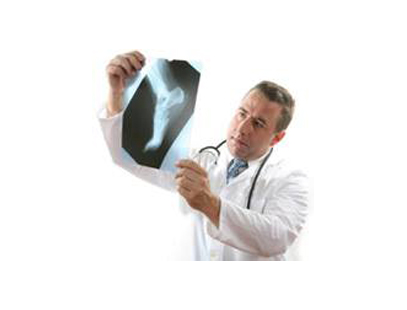
Enchondroma
Enchondroma is a common kind of benign bone tumour that originates from cartilage. Enchondroma can form in the bone under the toenail and in other bones in the body. An enchondroma usually affects the cartilage that lines the inside of the bones. The long bones of the hands and feet are the bones which are usually linked with this benign tumour. Nevertheless, other bones like the tibia, femur and humerus can also be affected. It can affect anyone at any age, but generally it is adults who suffer from it. The rate between male and females suffering from enchondroma is the same. Enchondroma does not usually grow back in the same place.
When the tumours occur in the small tubular bones, they cause the cortex of the bone to thin. This can make the bone become weak and break suddenly. When enchondroma comes about in the small bone at the end of the toe, it can be very painful and may feel like having an ingrown toenail. The exact cause of enchondroma is not known but it is thought to come about either from a constant growth of original embryonic cartilage or an overgrowth of the cartilage that lines the ends of the bones. An enchondroma may come out as one tumour or numerous tumours. Tumours can reoccur after removal.
Ollier's disease, also known as enchondromatosis, shows a strong preference for the small bones in the hands and toes, also known as phalanges, and the long bones behind the phalanges called metatarsals. It tends to have an effect on one side of the body more than the other and has a tendency to change into a malignant sarcoma. Maffucci's syndrome is a very uncommon form of enchondromatosis linked with many soft tissues like hemangiomas. This tumour has a bigger liking for the hands and feet, and has a greater inclination toward malignant change than Ollier's disease.
An osteochondroma is another benign bone tumour that makes up around 50% of all benign bone tumours. They have a tendency to affect the long tube shaped bones of young adults. They usually occur in adulthood and affect twice as many males to females. In general they are trouble-free, being more or less painless unless the surrounding tissue is aggravated. When the tumour is under the toenail, the toenail can be distorted and it can cause an ingrown toenail. A surgical excision is needed to treat an osteochondroma. Once the bone tumour has been removed and examined by a pathologist then a final diagnosis can be made at this point. Osteochondromatosis have a well-known hereditary occurrence in males more frequently than females.
















